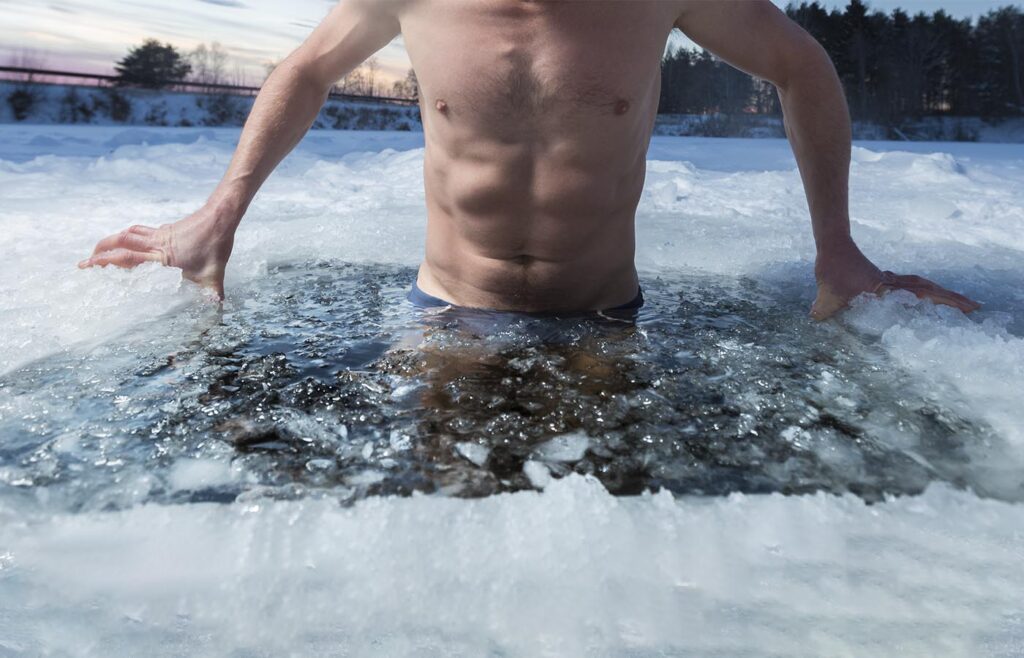Why ice baths are more than just a trend
We’re all seeing it- the videos going viral across social media of people dunking their bodies into gallons of ice cold water. Similar to working out, if you don’t post or talk about it, it didn’t happen, right?
Whether you’re posting selfies from the plunge or sitting in solitude, the health benefits far exceed being the toughest one in the room. We’re breaking down the top four reasons cold therapy can positively impact your overall wellness.
As always, consult with a physician prior to health and wellness changes to your routine.
1. Pain Management
You’ve probably heard it before; ice for pain, heat for tightness and stiffness. Cold therapy reduces pain by desensitising nerves and reducing swelling. Reducing swelling relieves pressure on surrounding tissues and muscle structures, therefore reducing pain levels.
With the physical reduction of swelling, areas of pain are able to relax, thus sending a calming signal to the brain, displaying a perfect harmony of the mind body connection.
“It’s also been demonstrated that cold water immersion can lower post-exercise muscle stiffness, alleviate fatigue and decrease exercise-induced muscle damage (EIMD), ” says Doctor of Physical Therapy and CSCS, Dan Giordano. “Overall it does have the ability to enhance athletic performance when done correctly.”
While the plunge can decrease pain level and aid in muscle repair, ice baths have shown a delay in recovery and can potentially impact skeletal muscle after resistance training.

2. Inflammation
Inflammation can occur for a variety of reasons, including acute to major injuries or systemic inflammation identified through blood sampling and hormone markers. Those who are living with autoimmune disorders oftentime find themselves battling bouts of chronic inflammation that come with symptoms ranging from fatigue, joint and muscle pain and low energy levels.
Cold therapy can reduce localised inflammation caused by moderate to intense exercise and can aid in the healing of injury by reducing edema, which is swelling caused by excess fluid trapped in the body’s tissues.
“When tissue is injured, the immune system triggers an inflammatory response,which is essential for healing and muscle repair” says Giordano. “Macrophages, a type of white blood cell, are dispatched by the body to remove cellular debris and secrete insulin-like growth factor 1 (IGF-1) that’s necessary for muscle regeneration.”
3. Mood And Cognitive Function
Cold therapy has been shown to reduce depression, and may help with anxiety, stress as well as improving mood and general brain function. The brain releases norepinephrine during cold stress, which is shown to reduce depression and anxiety . Heart rate and heart rate variability are linked to reductions in stress as well, both of which occur with cold therapy. Mood and brain function improve through stimulation of the parasympathetic nervous system.
Oftentimes, cold therapy is paired with a series of breathing techniques, including but not limited to box breathing. Traditionally box breathing entails breathing in for 4 seconds through the nose, holding for 4 seconds, exhaling for 4 seconds through the nose, and holding the empty breath for the final 4. Repeat this cycle for 4-8 rounds or for the duration of your plunge.
4. HRV (Heart Rate Variability)
Cold therapy’s impact on heart rate could be largely due its ability to stimulate the Vagus nerve, which in turn lowers the heart rate and improves heart rate variability.
Here’s the kicker; it requires you to submerge up to the top of the neck. For those who love to camp out from the waist down, you might not be reaping the cardiovascular benefits plunging can provide. Studies have shown that resting heart rate can lower in real time with a potential long term impact on higher HRV.
If you’re new to cold immersion therapy, start small with a goal of 3-minutes. In fact, if you want to do the bare minimum but still benefit from the effort, 3-minutes is technically all you need.
If you’re looking to fully optimise your recovery to increase blood flow throughout the body, give contrast training a try, switching back and forth between a cold plunge and sauna for about 3-6 rounds. More on that next time.
